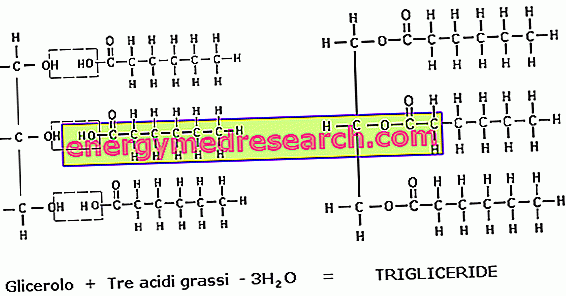Generality
Serum creatine kinase-MB, more simply CK-MB, is an isoenzyme of creatine kinase, concentrated mainly in the heart muscle . As a result, CK-MB values in the blood can be measured to monitor the health of the heart.

What's this
MB creatine kinase (CK-MB) is found mainly in cardiac cells, while it is located in smaller quantities in skeletal muscle cells.
CK-MB is released from cardiac cells and is detectable in blood in significant concentrations when heart damage occurs.
Why do you measure
The enzyme creatine kinase (CK) test measures its total concentration, but does not distinguish between the different types of isoenzymes. Therefore, following an increase in the CK value, the determination of the MB isoform makes it possible to distinguish whether this increase is due to damage to skeletal muscle or cardiac muscle.
In particular, if the CK-MB is very high, it is likely that the patient has had a heart attack or a noticeable heart disease has occurred.
The examination can be prescribed at regular intervals when the patient experiences intense chest pain or if the diagnosis is not clear, following non-specific symptoms such as:
- Shortness of breath;
- Fatigue;
- Dizziness;
- Nausea.
When is the CK-MB exam indicated?
Measurement of the amount of creatine kinase-MB in the blood helps to understand if the patient has suffered an acute myocardial infarction (when the dose of troponin - more specific for heart damage - is not available).
The increase in CK-MB occurs already about three hours after the start of cellular necrosis, to then reach the maximum peak in the following 12-24 hours, and return to normalization after about 48-72 hours from the event.
The test is also useful after the infarct diagnosis and in monitoring progressive cardiac damage.
Normal values
In general, normal CK-MB values between 0 and 25 IU / L are considered.
However, it must always be considered that the reference interval of the examination can change according to age, sex and instrumentation used in the analysis laboratory. For this reason, it is preferable to consult the ranges listed directly on the report.
CK-MB Alta - Cause
The values of CK-MB rise in the presence of damage to the heart muscle - such as acute myocardial infarction - of a trauma or heart surgery.
In particular, an increase in creatine kinase-MB can be observed in those who have had a heart attack, approximately 3-6 hours after the onset of chest pain; in this case, the CK-MB values reach a peak in 12-24 hours, and then return to normal after 48-72 hours.
If there is a second heart attack or damage progresses, then CK-MB levels increase again and / or remain high over time.
High values of this isoenzyme can also be found in the case of:
- Physical injury of the heart muscle;
- pericarditis;
- Myocarditis;
- Electrocution (electric shock);
- Defibrillation.
Other conditions that can induce an increase in the concentration of CK-MB are renal failure and intense exercise.
More rarely, chronic muscle diseases, lowering of thyroid hormone concentration (T3, T4) and alcohol abuse can increase serum creatine kinase-MB.
Considering, then, that CK-MB is present in small quantities also in skeletal muscle, important muscle damage (myositis, rhabdomyolysis, ischemia, surgical operations, traumas, etc.) can increase its concentration.
For the same reason, in cases where both skeletal muscle and muscle are damaged, the presence of CK-MB due to the infarct can be confused.
CK-MB Low - Causes
Normally, creatine kinase-MB is not detectable in the blood or is very low. In general, therefore, there is no anomaly concerning too low levels of the isoenzyme.
How to measure it
To measure the CK-MB values, it is sufficient to undergo a simple blood sampling from a vein in the arm, which will allow to control the levels of this isoenzyme in the blood stream.
Preparation
The patient can undergo blood sampling preferably after an 8 to 10-hour fast.
Interpretation of Results
Normally, the CK-MB value is not detectable or is very low in the blood. Following heart damage, we see an increase in this parameter after about three hours, but the peak - as in the case of Troponin - will not occur before 18 hours. Unlike the latter, however, after a maximum of three days it is possible that no trace remains in the blood.
If creatine kinase-MB increases and the CK-MB / CK ratio (relative index) is greater than 2.5-3, the heart is likely to be damaged; a high CK-MB, but a relative index below this value suggests, instead, the involvement of skeletal muscle.
Interpretation of high CK-MB values
Since small amounts of CK-MB have also been found in tissues other than the myocardium - such as skeletal muscle especially in the pelvic area, prostate, uterus, lung, spleen and small intestine - we are not talking about a 100% specific marker. Therefore, high CK-MB values can be found even in the event of trauma, muscular dystrophy, myositis, rhabdomyolysis and vigorous exercise. The risk of false positives, when CK-MB is measured for the diagnosis of acute myocardial infarction, is also elevated in the presence of pericarditis and myocarditis.
In Case of Heart Failure
To ensure that the serum increase in CK-MB is effectively linked to cardiac damage, it is important to evaluate the values in a general context, which also takes into account the total levels of creatine kinase or other markers of cardiac damage.
Moreover, for the diagnosis of infarct the evaluation of the temporal trend is very important, that is the time of appearance of the serum increase of CK-MB compared to the onset of symptoms.
After myocardial infarction, the enzyme CK-MB:
- It can be detected as early as three hours after the onset of necrosis;
- It reaches maximum values between 18 and 24 hours after the event;
- It normalizes within 36-72 hours.
The diagnostic sensitivity of CK-MB with regard to myocardial infarction is therefore decidedly low, if the dosage is performed within three hours of the onset of anginal symptoms, but increases significantly with the passage of time, reaching 100% among the 8 and 12 hours after the event.
Monitoring of CK-MB levels over time also allows to evaluate the efficacy of reperfusion of the occluded coronary artery, obtained by fibrinolysis or primary angioplasty; the faster reperfusion is, the earlier it is generally the serum peak of CK-MB.
Plasma CK-MB can be detected in two different ways: determination of the catalytic activity (CK-MB activity) and determination of the protein mass (CK-MB mass); the latter, more recently introduced, is preferred to the first one for the best specificity, above all if a total CK-MB mass / CK ratio is introduced as threshold value> 5. The increased sensitivity of the ratio, however, is less when there is cardiac damage in conjunction with skeletal muscle damage.

CK-MB1 and CK-MB2
From a few years it is possible to evaluate the relationship between the two isoforms of the enzyme: CK-MB1 and CK-MB2. The latter represents the tissue isoform initially released from the myocardium after an infarct, then rapidly converted to the peripheral level in the CK-MB1 isoform.
Normally the CK-MB1 isoform prevails, so the CK-MB2 / CK-MB1 ratio appears lower than unity. If this ratio exceeds the threshold of 1.7 it acquires diagnostic value for acute myocardial infarction.
CK-MB2 isoenzyme can be detected in serum within 2-4 hours after the onset of symptoms and peaks within 6-9 hours; it is therefore configured as an excellent early marker of acute myocardial infarction.



